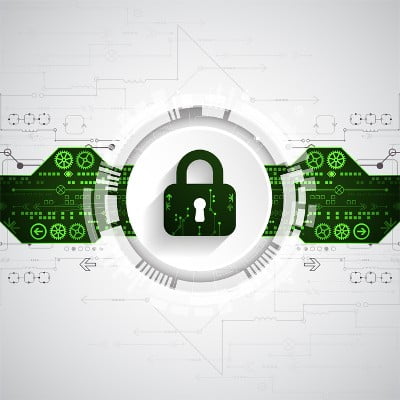Physical security is more or less what it sounds like: security intended to protect the physical infrastructure that houses your business and your critical data. Many of the pieces of physical security will seem very familiar, even if you didn’t know the right terms for them.
Access Control – Access control is also pretty much what it sounds like. An access control solution controls an individual’s access into an area. This is useful in ensuring that only those who are authorized access certain areas are able to, as these areas will require some form of identification to enter. This also allows the entrance and exit patterns of employees to be monitored for suspicious activity.
Identification – More often than not, physical security solutions will require more than one form of identification, or authentication. These are referred to as 2FA, or 2-Factor Authentication. If you have ever been required to enter a PIN code after providing a password, you’ve encountered 2FA identification.
Security and Monitoring – Of course, in order to have a comprehensive physical security setup, you have to have the ability to see anywhere in the building at any given time. There are multiple solutions that can accomplish this, security cameras being the first to come to mind. Returning to access control solutions, these can help keep a record of who accessed where, and when.
Communication – Communication has fairly close ties with security–after all, if your company experienced a physical security breach, you would want to hear about it, wouldn’t you? As a result, it is important that there are plenty of reliable ways for your personnel to reach one another to pass along status updates, security warnings, and other crucial pieces of information.
Document Security – There is a good chance that, if someone is taking the time and effort to access your business, they plan to profit from their heist as much as possible. This means that you should keep any access points to your internal documents well secured and restricted to those with authorization.
Keep Track of Devices – Remember, your documents can be accessed through more than just your in-house workstations. Implementing a Bring Your Own Device policy or distributing work devices can allow you to keep track of where the device is taken, and will allow you to remotely wipe them if they wind up being lost or stolen.
Keep Employees Trained – Of course, all the preventative measures in the world will do nothing if your employees aren’t also conscious of and actively implementing best practices that help to preserve the business’ security as a whole.
Security Culture – It is important that your employees are conscious of potential security issues as they go about their days. This awareness of potential security risks, how to identify them, and–most importantly–how to avoid them is absolutely crucial when your employees could just as easily be weak points in your network security. As paranoid as it sounds, threats to your cybersecurity really are everywhere…including at your business’ front door.
What To Implement To Build Up Your Physical Security
When building your physical security, it helps to consider what can threaten your business on a physical level. Sure, a particularly bold cybercriminal may attempt to gain access to your location, but that’s only the start of the physical threats to your business. It is critical that all threats to your business are considered, including the weather and other natural events.
This is why it is crucial that you keep a safe and secure copy of your business’ documentation and data offsite, preferably in the cloud. That way, should someone or something get past your physical defenses, you will not have lost everything.
To improve your data security, both digitally and physically, reach out to I.T. Solutions of South Florida for help.





